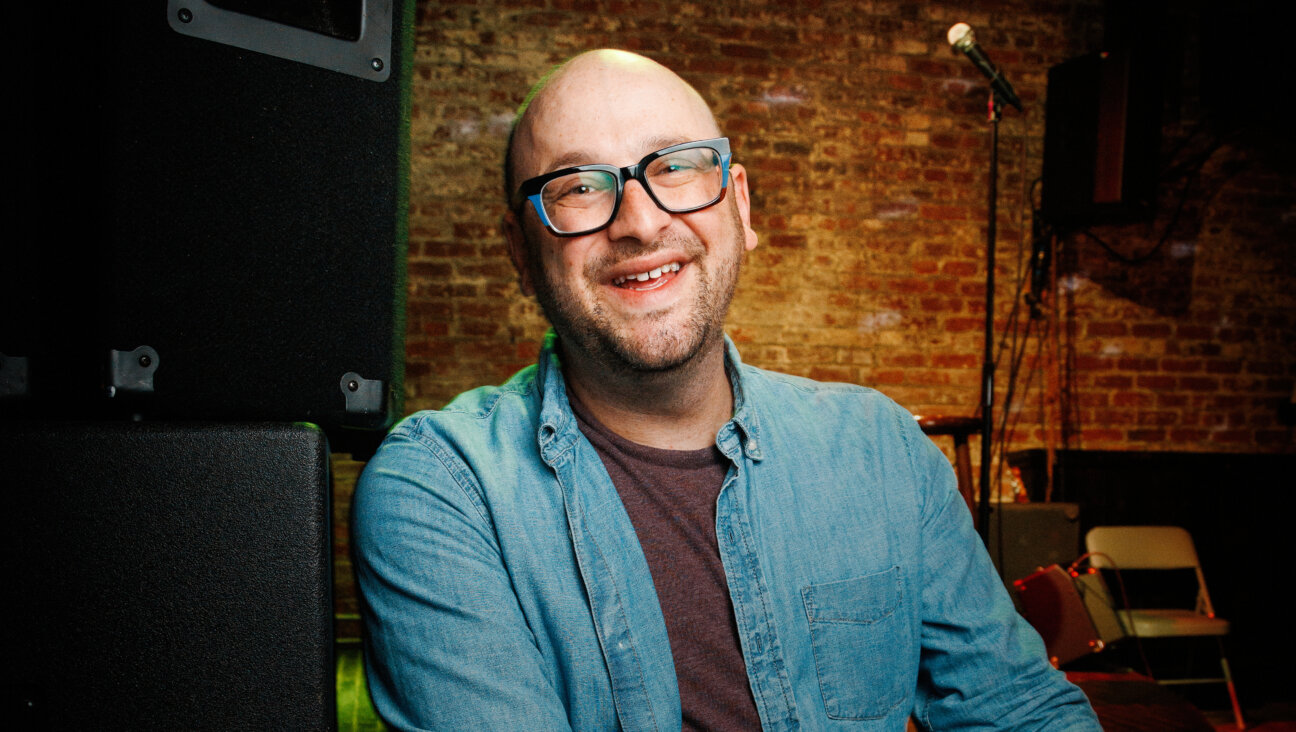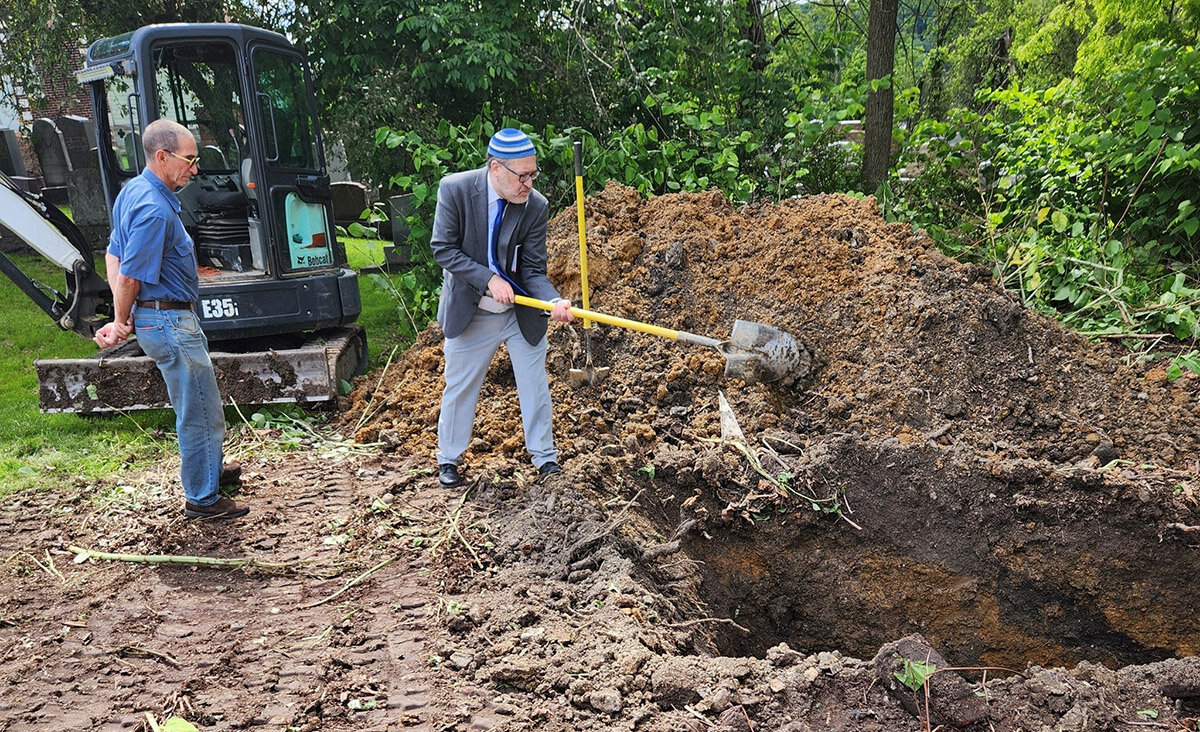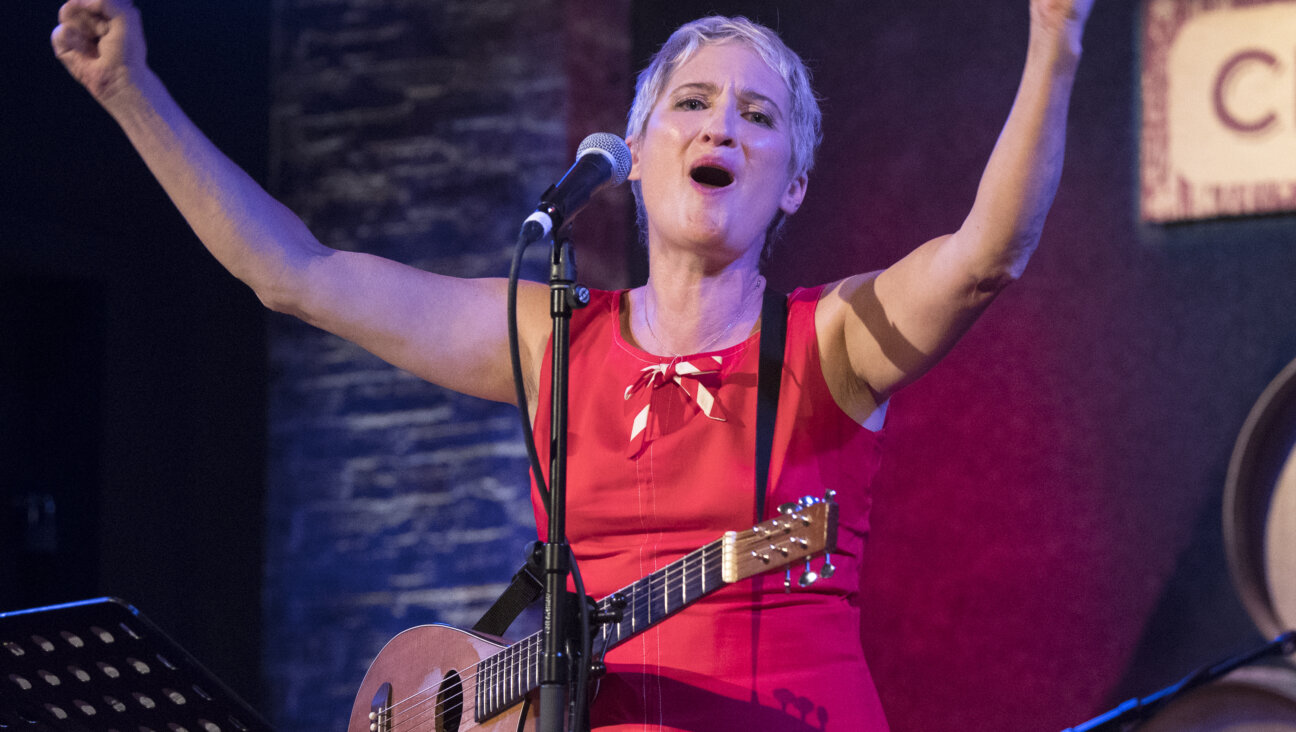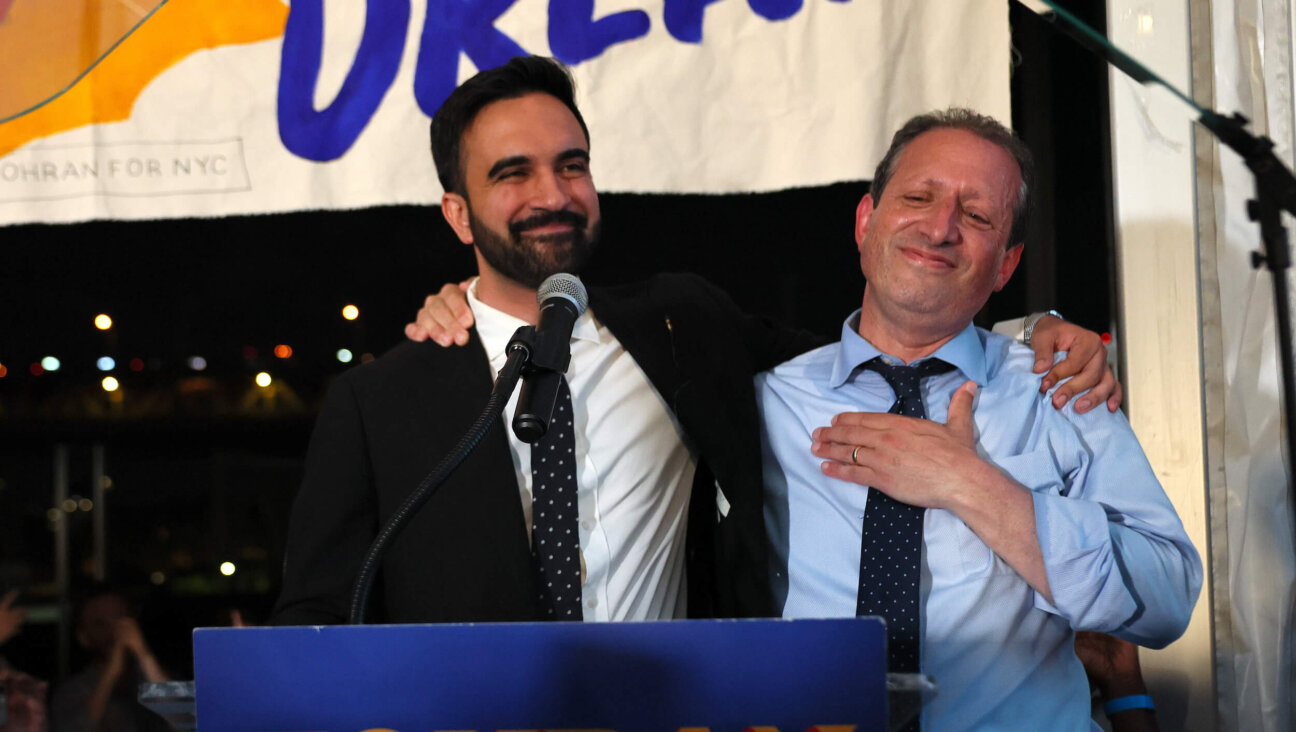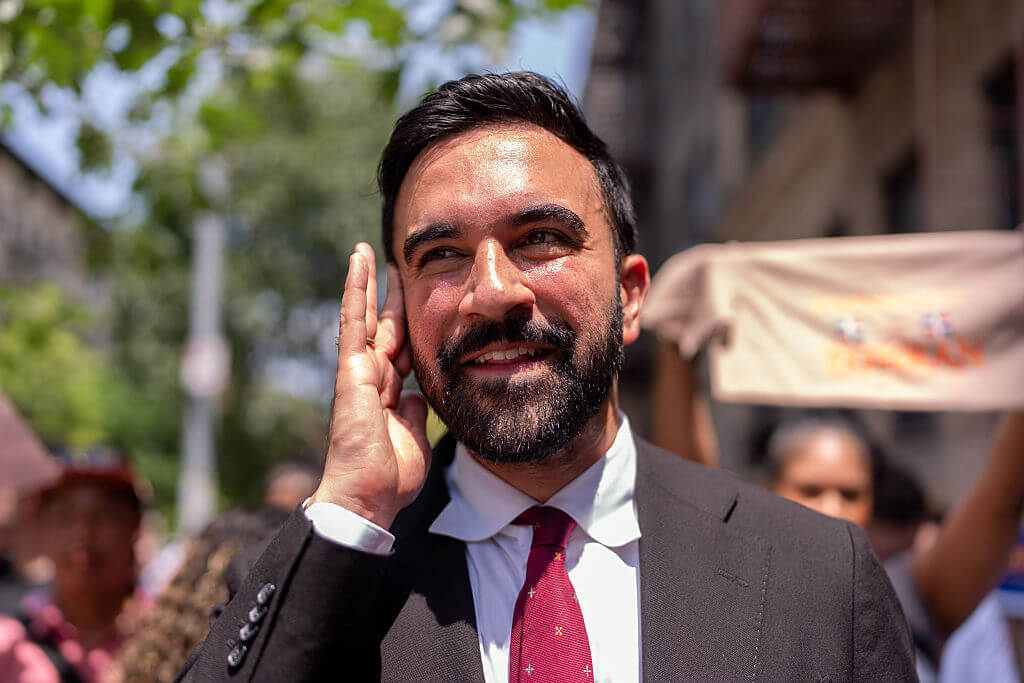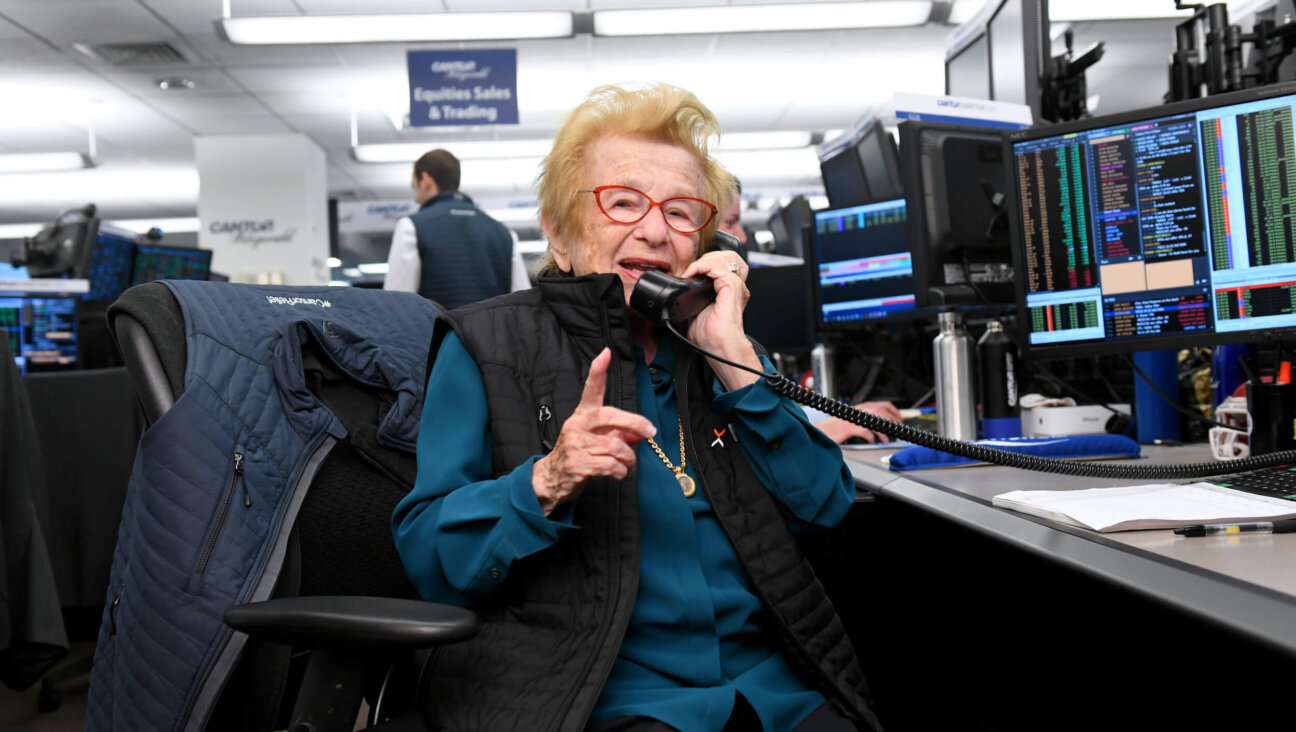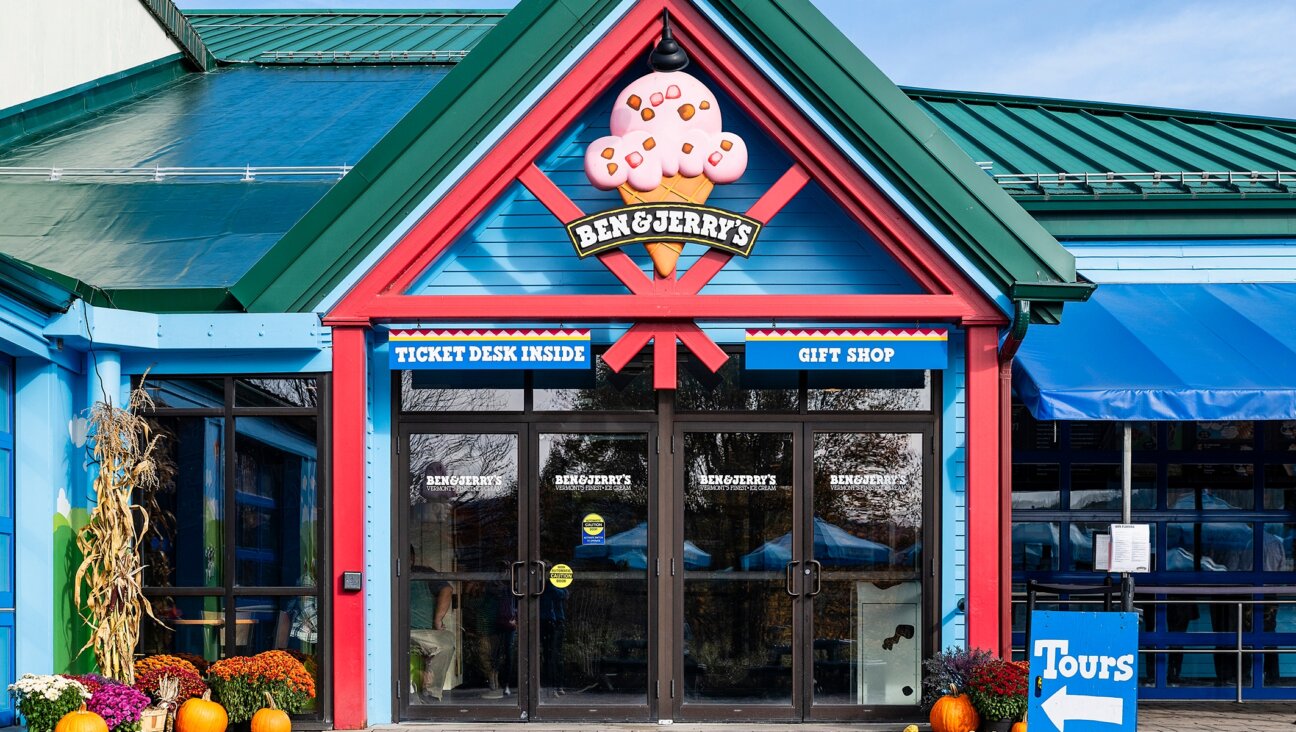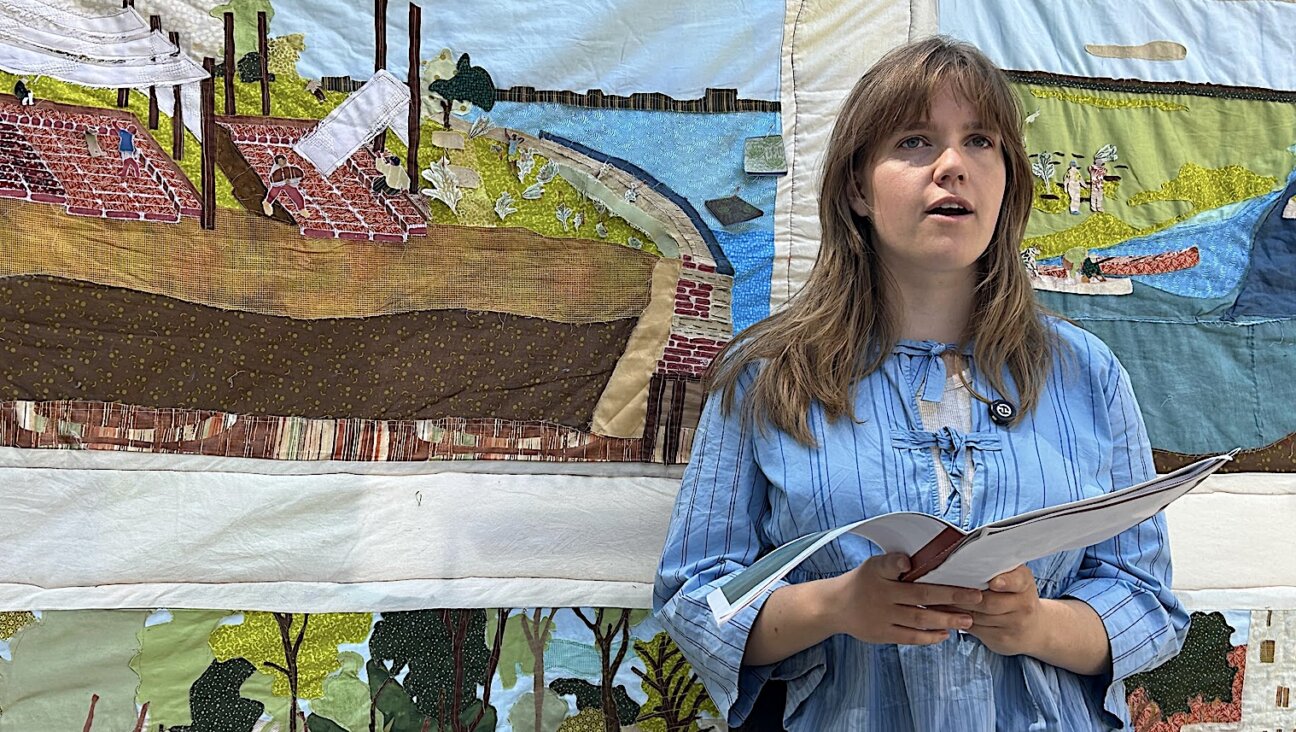Have Seltzer, Will Travel

Image by Kurt Hoffman
For three and a half years, Steve Levine has been bringing me seltzer. Every second Saturday, while I’m still in pajamas, Steve shows up at my apartment with six glass bottles in a steel-reinforced wooden crate that looks like it was nailed together in the 1920s. Most of the bottles are clear, though some are green or blue, and each one is topped with a siphon that holds in upward of 60 pounds of pressure. When pressed, the siphon will shoot seltzer with a force that once made this drink the centerpiece of vaudeville clown-and-cream-pie gags. If you’re not careful, the liquid will ricochet off the bottom of a glass and splash all over the kitchen. For each crate I pay $22, plus tip, which is a lot of money for six liters of carbonated water. It’s not a luxury I can easily afford.
Seltzer, A Brooklyn Tradition from Jewish Daily Forward on Vimeo.
And yet, like other seltzer drinkers, I find ways to justify the expense. Real seltzer is different than anything you can buy off the shelf or make at home with a SodaStream. Simply put, it’s a lot more carbonated. The bottles are made of glass half an inch thick, and the siphon is designed to keep the bubbles in. Compared to this stuff — “Jewish champagne,” so called — the club soda you get at the supermarket is insipid and flat. Seltzer is the only kind of carbonated water you can use to make a homemade egg cream, that chocolate-syrup-based drink that contains neither egg nor cream. There’s so much carbonation in seltzer that you can leave a glass on your nightstand, and it will still be fizzy in the morning. As it says on the company sweatshirts of the last seltzer plant in New York, “Good seltzer should hurt.” Physically, it’s impossible to drink too fast.
But I confess: I don’t order seltzer because of its carbonation. I order it because I can. Where else but in New York could I get home delivery of these beautiful bottles, not as decorative props but as functioning soda dispensers? Where else could I get them from one of the few seltzer men still in business? And for how much longer? Over time, I’ve come to appreciate the unique qualities of seltzer. But at the beginning, I ordered it because it tickled my fancy, because it suited my style, because I relish those bits of history that might soon be in a museum but hang on stubbornly for now. I still get seltzer for all these reasons. But mostly I buy it because of Steve Levine.
Like many of his customers, I heard about Steve through word of mouth — in this case from my Yiddish tutor, Esther Goodman. Once a week, I go to Esther’s house in Boerum Hill to read Yiddish literature over little plates of nuts and dried fruit, washed down with glasses of hot tea with lemon. In the summer, Esther might serve seltzer instead of tea, pulling a cold bottle from the crate that was delivered the previous weekend. Esther has been getting delivery from Steve for almost 40 years, and not just of seltzer. In his time, Steve has dealt in everything from soft drinks, beer and juice to cleaning products, paper goods, office supplies and even eggs. When Esther’s daughter was young, Steve brought her diapers. If you want it and he can get it, he’ll bring it to your door. But seltzer is Steve’s marquee product. Each bottle he delivers bears a label reading “Steve Levine Cowboy Deliveries” and the motto “Life’s Purest Drink.” How could I see that and not give him a call?
Although I speak to Steve regularly, I rarely see him. Since he suffered a broken shoulder in 1985 while surfing near his home in Seagate, he doesn’t carry the cases himself anymore. Instead, his assistant of nine-odd years, John Zahosa, a 46-year-old part-time sheet metal worker, comes to my door while Steve waits in the van. I know Steve mostly through his voice — a surly baritone with an accent straight out of deepest Brooklyn. Every other Thursday, he’ll call to remind me that he’ll be arriving on Saturday, just in case I forgot. But on a recent Friday — it was the day before winter storm Jonas, so Steve was doing his deliveries a day early — I joined him on part of his route, riding along from my place in Crown Heights through Brooklyn Heights and Boerum Hill.
The idea of seltzer delivery evokes scenes of a bygone age — of a horse and wagon clanking over cobblestoned streets, or one of those old-fashioned soda trucks with open sides. Steve had a truck like that, in the 1970s. These days, though, he makes his deliveries in a gold-colored Chrysler minivan outfitted with a custom suspension system. Like other seltzer men, Steve owns all of his own bottles — about 400, according to his rough count, plus a few rare and collectable items. Every two weeks, he loads the van with about 100 of them and drives to Gomberg Seltzer Works in Canarsie, the last seltzer bottling plant in New York. At Gomberg, the bottles get refilled with triple-filtered New York tap water using a machine that was made in London more than 100 years ago. Steve and John then load them back into the van for delivery that weekend all over Brooklyn.
Steve is a big guy, though by his own account, he’s smaller than he used to be. Now 77, he’s around six feet tall with salt-and-pepper hair and the build of a retired athlete. The day I rode with him, he was dressed in faded jeans, white sneakers and a New York Giants jacket and baseball cap — a team he’s been a fan of since running back Frank Gifford led them to victory over the Chicago Bears in the 1956 NFL championship. As we rolled through downtown Brooklyn listening to Billy Joel on 101.1 FM, Steve made calls to customers on his flip phone, and offered bits of wisdom and personal history: In the summer, the spot around Tillary and Jay streets is “like Death Valley,” the hottest place in the borough; you should always wear a backpack with both straps to avoid injury; he got to be called “The Cowboy” because of a hat he wore to keep the sun out of his eyes; in 2012, during Hurricane Sandy, he watched three of his cars float out to sea over an eight-foot fence. And, after a little prodding, he told me how he got to be one of the last seltzer men in Brooklyn.

Image by Thea Glassman
Before you could get carbonated drinks in plastic bottles, seltzer delivery was a huge business. The drink became famous in America, but it originated in Niederselters, Germany, the site of a naturally carbonated mineral spring renowned for its curative properties. Seltzer delivery existed even back then; water from the spring was bottled and sold all over the world. Then, in 1772, Joseph Priestly, the English scientist who discovered oxygen, published a paper titled “Directions for Impregnating Water with Fixed Air,” laying the foundation for the modern soft drink industry. Mass production of seltzer came a few years later with an industrial carbonation machine built by the German watchmaker Johann Jacob Schweppe. In 1813 the Englishman Charles Plinth put the last piece in place with the invention of the modern soda siphon.
Like many parts of American Jewish culture, there was nothing specifically Jewish about seltzer in Europe. But Jews helped import it to America, and they made it their own. In the early 20th century, there were seltzer plants all over the country, and thousands of seltzer men to go with them. Bottlers used to have to pay off delivery guys to keep their business, and that of the customers they served. Even after the advent of plastic bottles, traditional seltzer remained popular. As recently as 1997, an article in The New York Times estimated that there were 45 seltzer men still working in the New York area, plus a few in Chicago, Miami and Los Angeles. Since then, that number has dropped sharply. In 2004, the Los Angeles Times reported, there were 10 left. Today there about five in New York, including Steve Levine.
Steve isn’t a relic of seltzer’s glory days, however, so much as its accidental representative. Born in 1939, he grew up in Bensonhurst, a neighborhood that was then about half Jewish and half Italian. Steve’s father, who worked in a family-owned haberdashery business near Radio City Music Hall, died of a blood clot when Steve was just eight years old, an event he remembers vividly. “They had a wedding that night, and when he came in to kiss me goodnight, he was limping, grimacing. Instead of getting it checked out, he went dancing and the next morning he was dead.”
As a teenager, Steve went to Lafayette High in Bath Beach, where he played on the school’s football team. He might have gone to college on an athletic scholarship, but instead he joined an uncle in the diamond business. “We controlled that block,” Steve boasted, recalling their store on 47th Street in Manhattan. “What I saw was worth millions and millions of dollars. I used to carry stuff — forget about it.” According to Steve the business counted the Catholic Church among its customers, including the Archbishop of New York, Francis Joseph Spellman. Steve made money and was surrounded by money. For a kid from Bensonhurst, it was quite a ride.
But living the high life took its toll. Steve got married, had a son, and got divorced. He started drinking and doing drugs. “I had a great time for 15 years and I really destroyed myself,” he said. So he decided to get out. He bought a truck and a route for $3,000, and started making deliveries in Brooklyn and Queens. He also got married a second time, and had two daughters. Unexpectedly, seltzer turned out to be a refuge. Most likely, it saved his life.
Which isn’t to say that the business was sedate. When Steve started making deliveries, it was the beginning of the 1970s — not a high point for New York City, or for Brooklyn. Often, he found himself delivering to dangerous neighborhoods and facing mob offers of “protection.” Sometimes he’d deliver free products to the police so they’d watch his back; at one point, he carried a .38-caliber gun and brought along a German shepherd named Friday. Once, he recalled, when the gang that ran a housing project in Bushwick couldn’t get him to fall in line, they broke all of the elevators in the building so that he wouldn’t be able to make his deliveries.
“And then,” Steve said, “I started getting old.” He suffered the shoulder injury, which required him to hire a helper. For months, he needed help getting dressed since he couldn’t lift his arms. He sold part of the route and started working only on weekends, then only every other week. Whereas he once had about 100 customers, he estimates that he now has about 20 to 25. And although he will deliver pretty much anything they ask for, the business is mostly in seltzer. “That’s where the money is,” he told me. “It’s very good for old people, who can’t unscrew a bottle cap. You can be 100 years old and still use seltzer.”
I don’t know of any centenarians on Steve’s route, but these days his customers tend to be middle class or wealthier and middle-aged or older. On my trip with him, we met a 74-year-old Brooklyn attorney named Neil Cohen who’s been getting seltzer deliveries from Steve since the early ’70s. A native of the Bronx, Cohen grew up with seltzer. “Nobody knows what seltzer is until they taste it,” he told me. “Seltzer is life. I go through almost two bottles a night. Myself.”
Over the years, Steve has developed relationships with his clients that go beyond business. When Cohen and his wife celebrated the bar mitzvahs and weddings of their two sons, Steve was an invited guest. Other customers told me similar stories. Harriet Rhine, a retired teacher and current swim instructor from Ditmas Park, recalled how Steve brought her diapers when her sons were babies, and later he helped them when they got summer jobs as lifeguards in Seagate. Harvey Wang, a photographer who’s been getting deliveries from Steve across several homes and neighborhoods, told me how Steve brought his family a gift of chocolate-covered cherries when their son Leo was born.
“He’s a bit curmudgeonly, but he’s been very paternal to us; he scolds me, but he’s also very sweet,” Wang said. “It’s a ritual that makes New York feel like a small town, to have somebody who delivers a service that you know personally. It’s a connection with a very different type of New York.” As Kenny Gomberg, the third-generation owner of Gomberg Seltzer Works, told me, “Seltzer isn’t a product — the seltzer man is.”
What will happen when guys like Steve aren’t around anymore? The business has experienced a modest revival in recent years thanks to the efforts of Alex Gomberg, the fourth-generation heir to Gomberg Seltzer Works. He’s rebranded the business as the “Brooklyn Seltzer Boys” and capitalized on the borough’s craze for everything homemade and artisanal to sell seltzer to bars and restaurants. But seltzer men like Steve are likely the last of their kind. “If something happens to him I get worried,” Cohen told me. And to be honest, so do I. Which is why I’m going to keep getting seltzer delivery — at least as long as I can.
Ezra Glinter is the deputy culture editor of the Forward. Contact him at [email protected] or on Twitter, @EzraG









